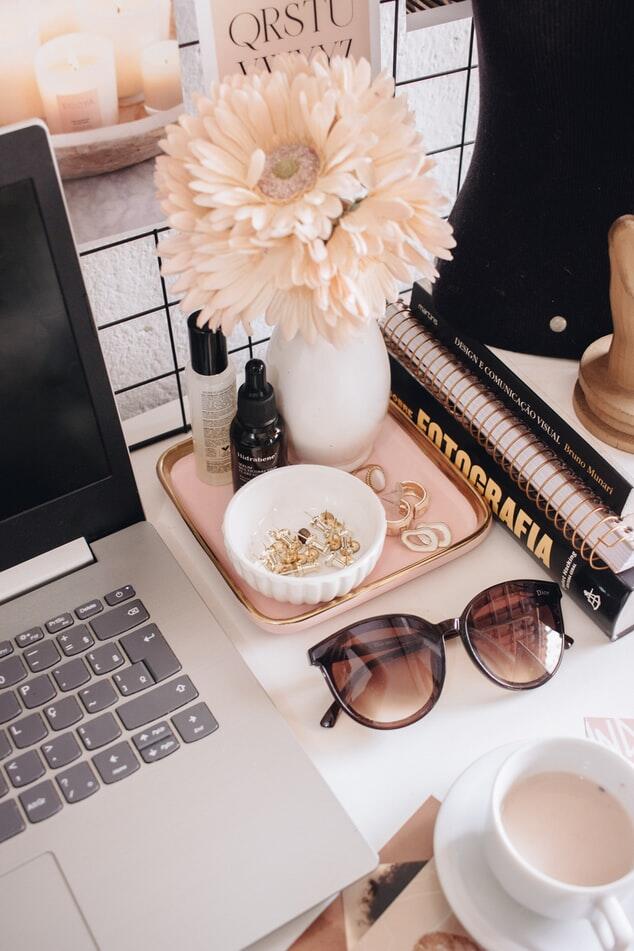
It’s easy to get carried away with the excitement of planning your own schedule and the thrill of signing new clients but you also have to wave goodbye to company cars, private healthcare and quarterly bonuses. Don’t even get me started on the non-existent sick pay.
Those First Few Months
We all know there will be a few financial realities to face and those first few months are tough. I can’t count the amount of what am I doing moments I had during this time. What got me through? Gin, melt in the middle chocolate puddings from M & S, my Mum, my first client, my bestie who was on maternity leave at the time and my new MacBook. My advice to any new freelancers out there is to embrace your slightly wonky work to life ratio because there will be times when you are working day and night so try not to stress your way through quiet days and just thank God Netflix exists. I was quite hard on myself during the first few months, only allowing myself treats from my former employed life when I’d signed a new client. There was a lot of just one more job and you can get your nails done and smother yourself in that ridiculously expensive moisturiser that you love. Yes, you may have to make a few cutbacks *bye bye online orders* but don’t put too much pressure on yourself. You aren’t going to be Beyonce overnight no matter how many nail appointments you miss. However, don’t give in to the Pinterest ideal and insist you need a picture-perfect office before you can even begin to write a few words.
Maternity Pay
This is a big one. When I first went freelance, having a baby wasn’t on the agenda but at this time in my life I’m painfully aware that as a self-employed freelance writer, I’m not entitled to statutory maternity pay. The good news is that while you won’t be frolicking around Harvey Nichols flirting with the idea of buying that Givenchy bag, you won’t go hungry as there is this thing called a maternity allowance. The government will give you a fortnightly maternity allowance from the estimated week that your child is due for 39 weeks. If you are registered with the HMRC and earn more than £30 per week, you are entitled to up to £139.58 per week. Put something away each month to prepare for maternity leave and make the concept less daunting.
Getting a Mortgage or a New Car
Being self-employed makes it harder to buy those big purchases like houses and cars. I was doing some research the other day and found a great blog post that explains how to go about getting car finance if you are self-employed. The good news is while you may have to jump through more hoops to get your dream car, there are companies out there with finance options for you even if you have struggled elsewhere. It’s all about knowing where to look. Buying a house is much more of a challenge as you will need to show proof of your income and your ability to make the repayments. Ideally, you will need evidence of two years of up to date accounts before you will be considered for a mortgage. Even if you are not thinking of buying a house in the near future, it is wise to put the wheels in motion by cleaning up your credit score from the outset and working on earning a consistent amount of income each month (easier said than done). Putting away your pennies for a deposit should be a priority and do some research on finding a reputable accountant. All of these things will stand you in good stead when the time comes to apply for a mortgage.
Tax
As a freelancer, one of the most daunting tasks you will face is doing your own tax return. Yes, this is scary but it’s nothing a G & T can’t fix. That being said, you must start as you mean to go on and make things easy for yourself from the offset. From the minute you take that leap into freelance life you must make a note of every source of income you make no matter how small. Create a spreadsheet and fill it in from day one. From that very first sponsored post on your blog to that project you completed on People Per Hour, it is crucial that you have an accurate record of your total income when it’s time to do your tax return. You and only you are responsible for totting up the exact amount of tax that you owe. In your spreadsheet, note down each amount earned and how much of that figure is taxable. This will give you an idea of how much you need to save each month (you get 11,000 tax free earnings per year). While you’re at it, make a column for your expenses and this is just as important. It is wise to consider getting an accountant to help you. Doing it yourself is the cheaper option but an accountant can give you information on what expenses can be offset against tax.
My advice on turning your side hustle into a full-blown freelance career is quite simply walk to the beat of your own drum. Everyone is different and the fact that I’m creative minded and not completely 100% on this planet is one of the reasons I’m so good at my job. Do what works for you and when it all goes to pot (some days it will) book a spray tan, (trust me it’s cheaper than counselling and will make you look like you’ve lost half a stone overnight) and have lunch with your mother.
Multiple Income Streams
Lastly, I’d like to draw your attention to multiple income streams. This is a safety net that means if one of your income streams disappears, you have more to fall back on. You could look into opening an etsy store, offer tutoring, rent out a property (AMS Housing Group give great advice on how to create a reliable source of income with their guarenteed rent scheme) or start self-publishing books online.
What do you find scary about being self-employed?

